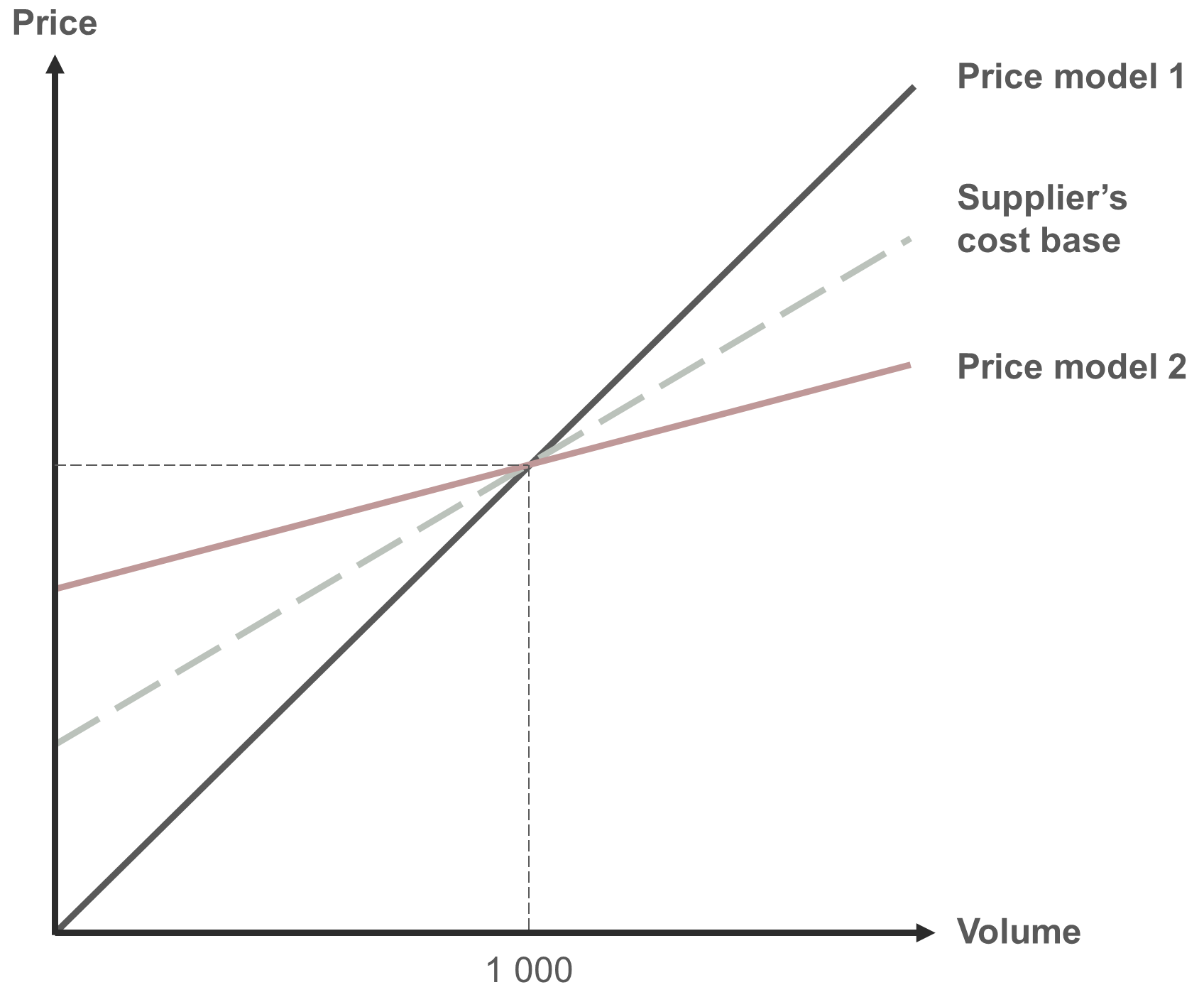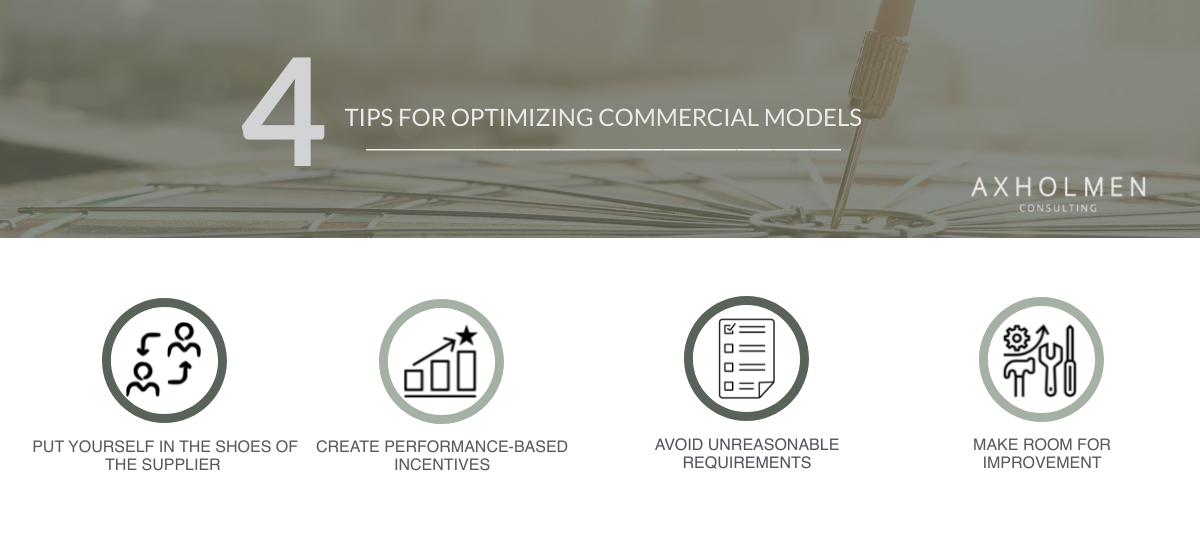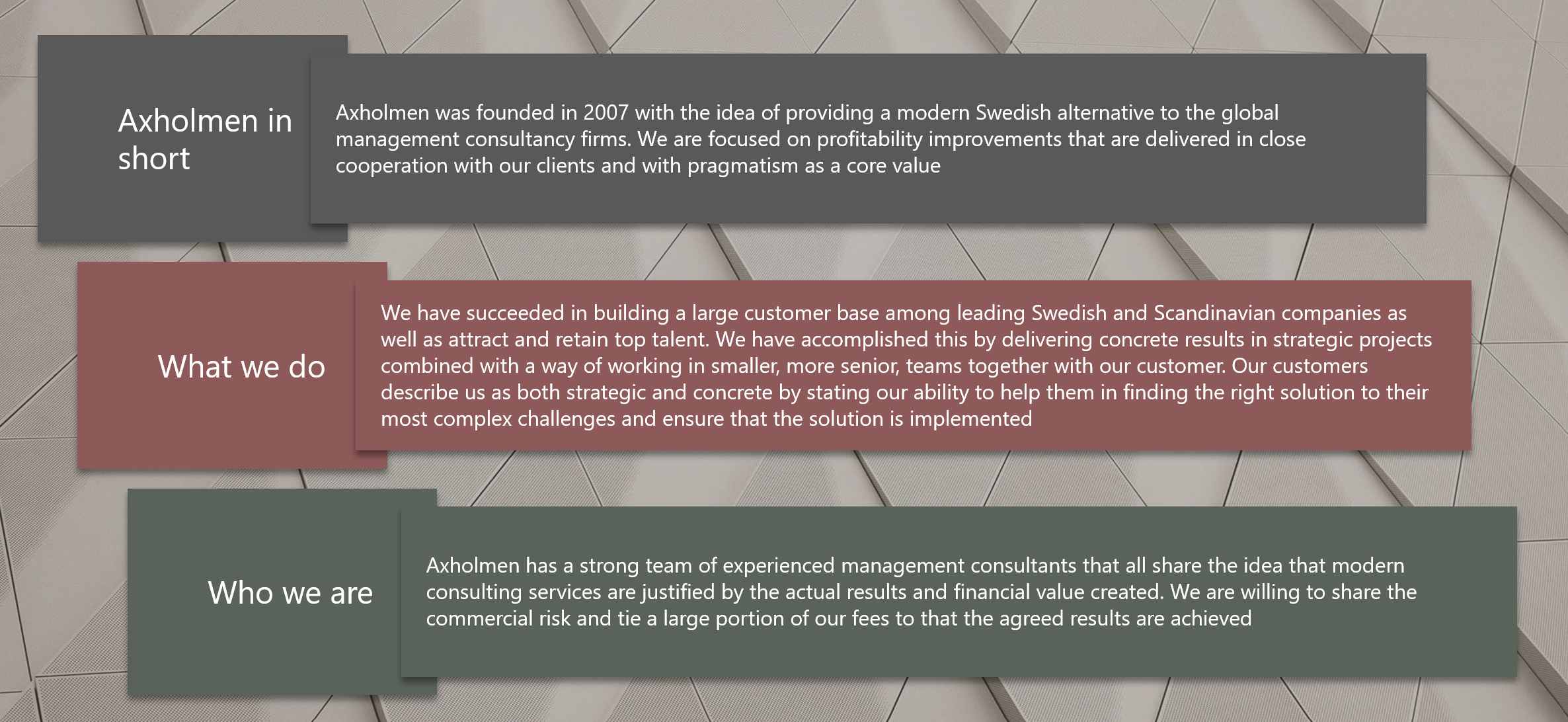RESULT
Within large and complex cooperative agreements, such as outsourcing or services procurement, it is all too common to encounter commercial models where little time or effort has been spent on ensuring that the model drives desired behaviors. Through a relatively small investment in simulation and scenario analysis we have, together with our clients, been able to formulate simple and efficient price models that create desired behaviors for both parties, leading to better cooperation and performance.
1. PUT YOURSELF IN THE SHOES OF THE SUPPLIER
Suppliers will always strive to maximize their profitability. Therefore, always ask yourself what the supplier can do within the scope of the agreement to improve its profitability before the commercial model is fully negotiated. If the supplier can improve its margins by, for example, increasing volume, streamlining production, or degrading performance to its unilateral advantage, the commercial should be adjusted. Figure 1 illustrates the difference between two simple price models. Price model 1 is a fully variable model and price model 2 consists of both a fixed and a variable component.
As a rule, assume that the supplier can influence the invoiced volume in some way, which is almost always the case. With price model 1, the supplier would see a double positive effect from increased volume, thanks to both higher volume and higher margin. Price model 2 on the other hand, has a built-in incentive that makes it disadvantageous for the supplier’s margins to increase volume above 1 000. In other words, lower volume equals better profitability with price model 2.

Price model 2 would create a “win-win” and incentivize the supplier to take measures to reduce volume to maximize profitability while the buyer would be invoiced smaller volumes and thus receive lower costs.
2. CREATE PERFORMANCE-BASED INCENTIVES
A smart commercial model regulates more than just unit prices. A supplier’s performance is often just as important and can be measured as the quality of the service delivered or how much direct or indirect sales the supplier generates. However, performance-based incentives are rarely given enough attention in commercial models. As an example, in the case of outsourcing of customer service, driving sales is just as important as solving customer problems, but nevertheless often represents a relatively small part of the customer service provider’s compensation.
Create a list of the most business critical targets for the cooperation and make sure there are incentives for the supplier to reach these targets.
3. AVOID UNREASONABLE REQUIREMENTS
In the long term, the supplier should be able to improve its performance. A common mistake however, especially in large outsourcing or cooperative agreements, is for the buyer to have unreasonable operational requirements on its supplier from day one. Setting too ambitious initial targets to solve existing problems often leads to both higher base prices as well as a corrosive collaborative atmosphere when the supplier fails to reach its targets. Verify your requirements by, for example in the case of outsourcing, assessing how well your own organization would perform against your targets. Another common mistake is to have too many and too harsh penalty clauses. If these become too dominant, they could lead to higher base prices and risk causing defensive behavior that discourages necessary service development. It often pays to give the supplier the opportunity to earn its penalties back by correcting errors and delivering without interruptions. The value achieved this way is often greater than the value of a given penalty.
4. MAKE ROOM FOR IMPROVEMENT
The central driver of most large cooperative agreements is that the supplier is better and more efficient in delivering a service. A prerequisite for this is that the supplier is allowed to change ways of working and delivery models. Too much micromanagement or overly specifying tight requirements will only make it difficult for the supplier to improve the efficiency of delivery and should be avoided. Instead, strive to set overarching business targets linked to financial incentives that will help you achieve your long-term goals. Pay a support provider per employee with access to the support rather than per solved issue. This will make the provider come up with tricks of its own to minimize the number of issues in order to increase its margins, while making life easier for the buyer.









